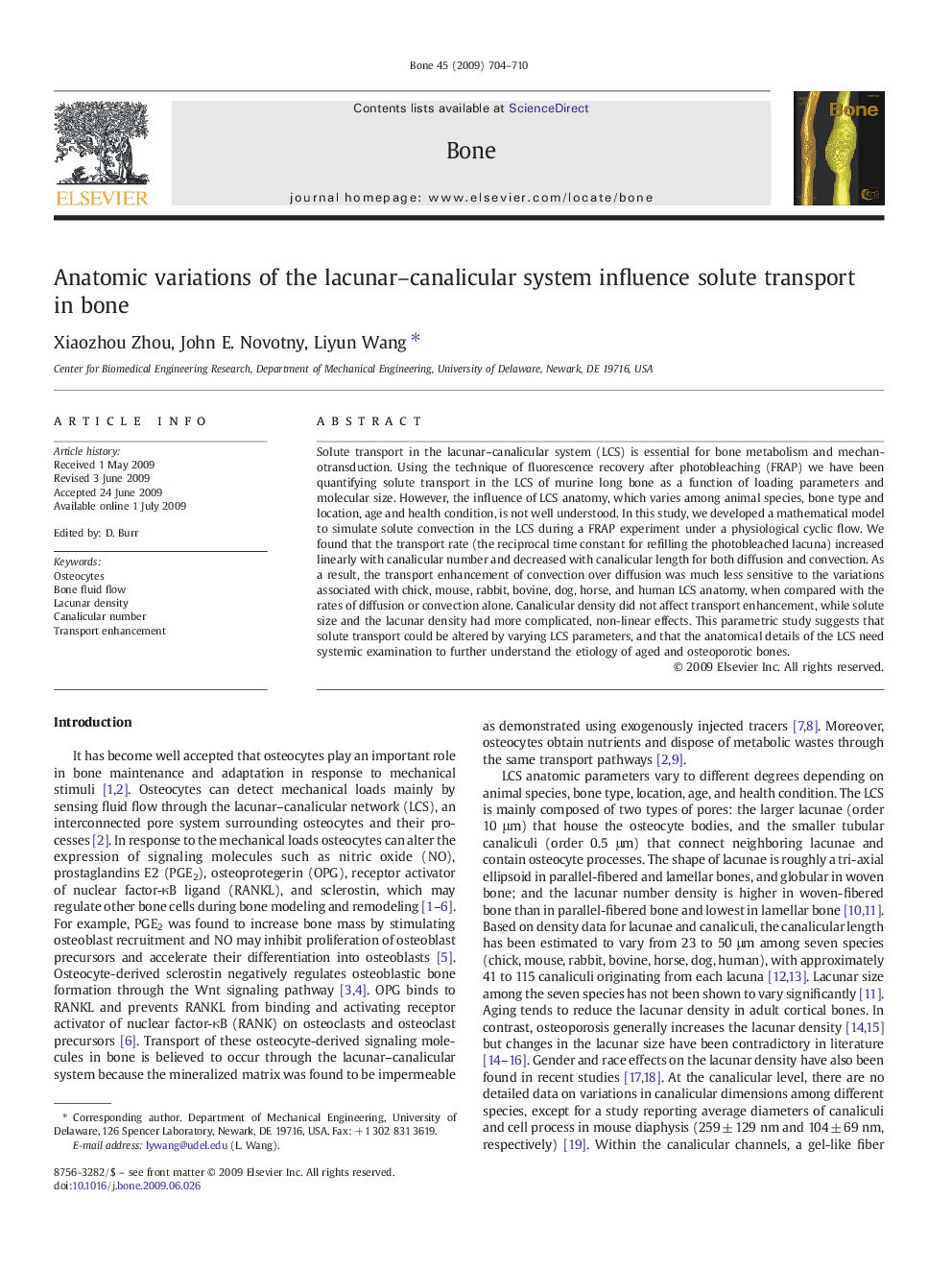| Article ID | Journal | Published Year | Pages | File Type |
|---|---|---|---|---|
| 2780798 | Bone | 2009 | 7 Pages |
Solute transport in the lacunar–canalicular system (LCS) is essential for bone metabolism and mechanotransduction. Using the technique of fluorescence recovery after photobleaching (FRAP) we have been quantifying solute transport in the LCS of murine long bone as a function of loading parameters and molecular size. However, the influence of LCS anatomy, which varies among animal species, bone type and location, age and health condition, is not well understood. In this study, we developed a mathematical model to simulate solute convection in the LCS during a FRAP experiment under a physiological cyclic flow. We found that the transport rate (the reciprocal time constant for refilling the photobleached lacuna) increased linearly with canalicular number and decreased with canalicular length for both diffusion and convection. As a result, the transport enhancement of convection over diffusion was much less sensitive to the variations associated with chick, mouse, rabbit, bovine, dog, horse, and human LCS anatomy, when compared with the rates of diffusion or convection alone. Canalicular density did not affect transport enhancement, while solute size and the lacunar density had more complicated, non-linear effects. This parametric study suggests that solute transport could be altered by varying LCS parameters, and that the anatomical details of the LCS need systemic examination to further understand the etiology of aged and osteoporotic bones.
